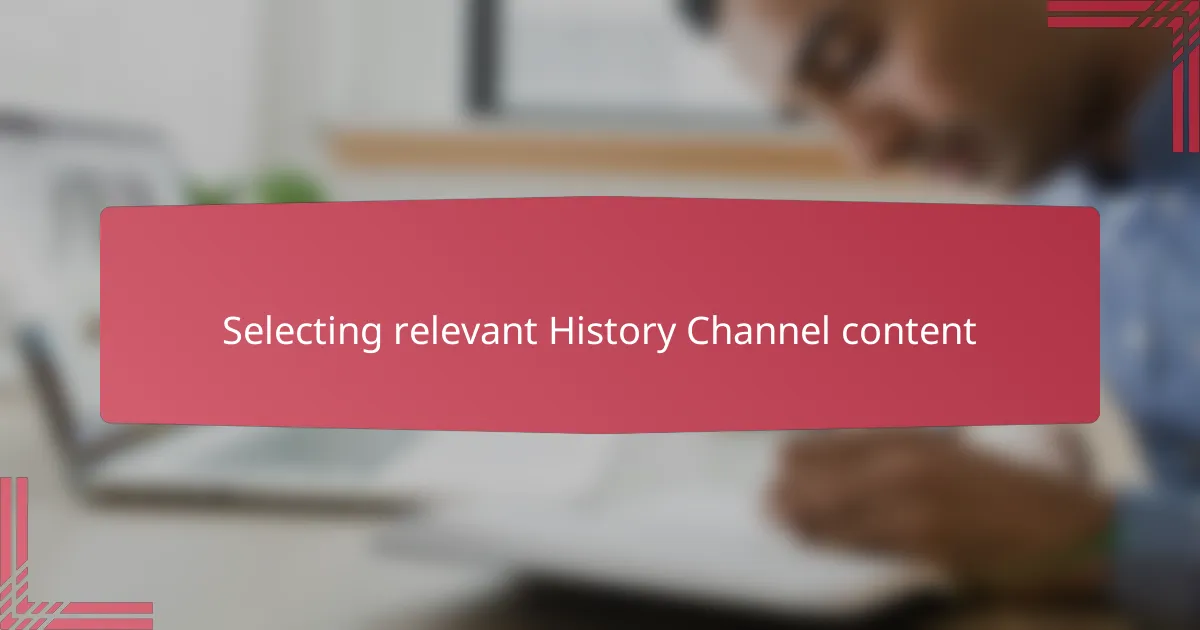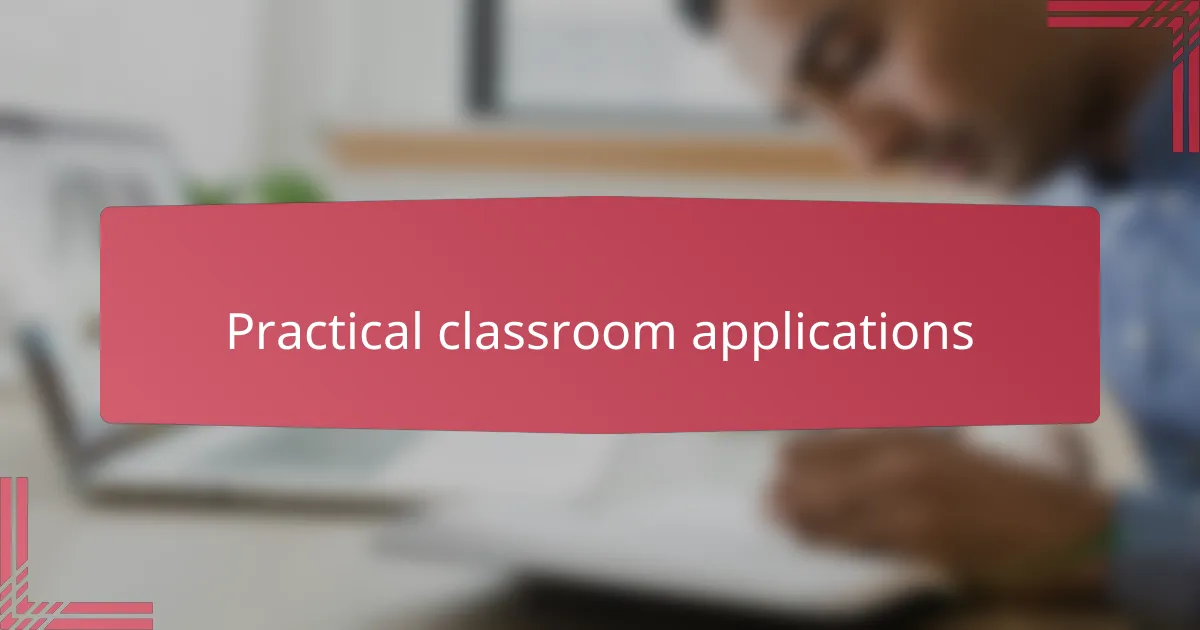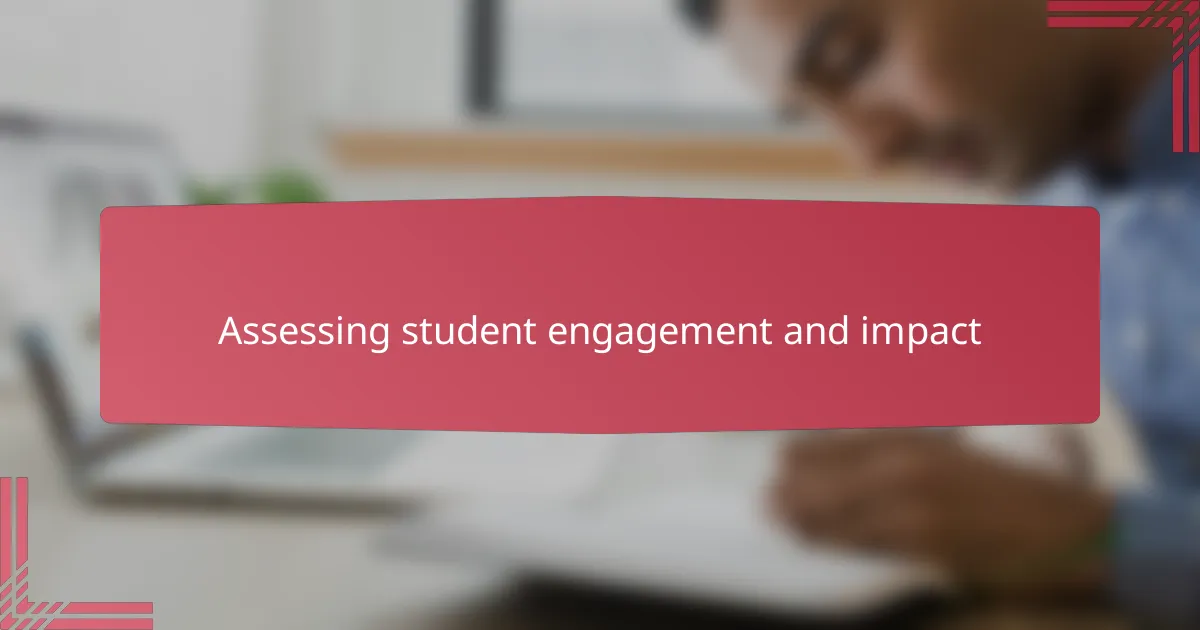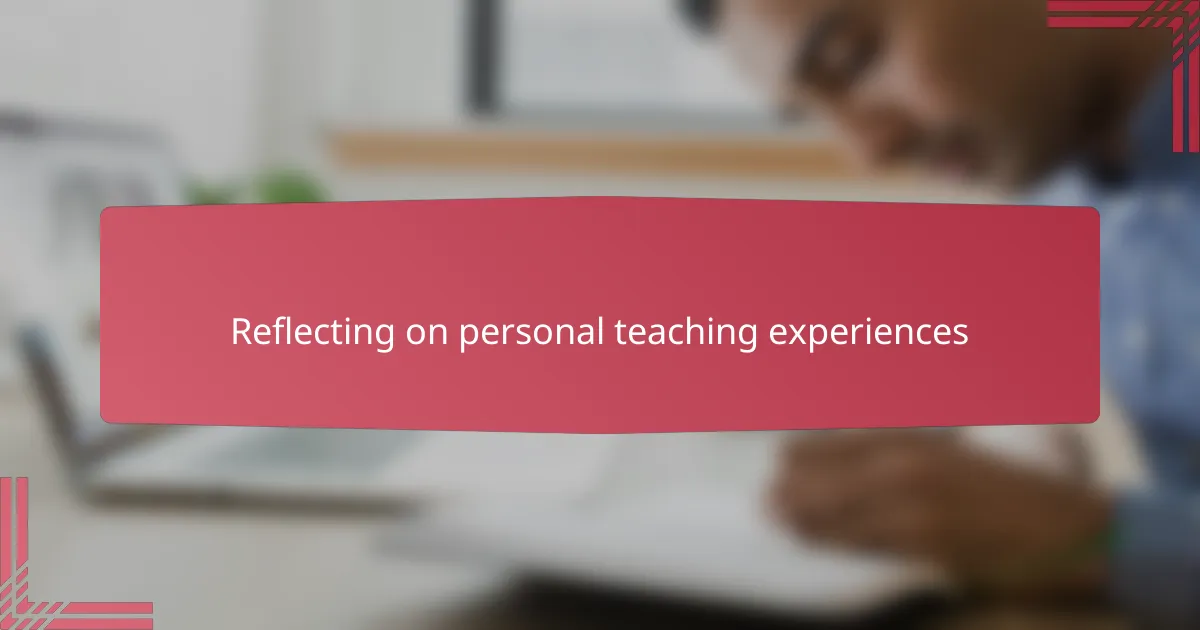Key takeaways
- Activist teacher resources empower educators to inspire critical thinking and connect historical narratives to contemporary social justice issues.
- The History Channel serves as a valuable tool for engaging students through compelling visuals and stories, promoting discussions on marginalized perspectives.
- Integrating multimedia content with active learning activities enhances student engagement, turning passive viewing into critical reflection and personal empowerment.
- Assessing student engagement involves looking for emotional and intellectual connections, which can reveal transformative insights beyond just test scores.

Understanding activist teacher resources
Activist teacher resources go beyond traditional materials by encouraging educators to challenge the status quo and inspire critical thinking in their classrooms. I’ve found that these resources not only provide historical facts but also spark meaningful conversations around social justice and equity. Have you ever noticed how a single story can shift the entire perspective of a class?
From my experience, understanding these resources means recognizing their power to connect history to present-day struggles. They invite us to ask tough questions and reflect deeply about whose voices are amplified or overlooked. This approach has transformed my lessons from mere information delivery into opportunities for genuine engagement and empathy.
Ultimately, activist teacher resources require us to be courageous and intentional about the narratives we choose to teach. They remind me that teaching is not just about knowledge, but about fostering awareness and action. How often do our materials inspire students to become change-makers rather than passive receivers? That question keeps me continually exploring and adapting my teaching tools.

Overview of the History Channel as a teaching tool
The History Channel has been an unexpected ally in my quest to bring history alive in the classroom. What stood out to me was its ability to present complex events through compelling visuals and narratives that grabbed my students’ attention in a way textbooks often couldn’t. Have you ever watched a documentary that made you see familiar history with fresh eyes? That’s exactly the effect it had on my kids.
One thing I appreciate about the History Channel is its range—from well-researched documentaries to series that dive into lesser-known stories. I found myself using specific episodes to highlight voices and perspectives traditionally left out of mainstream curricula. It felt like I was handing my students keys to a broader, richer understanding of history, which sparked lively discussions about social justice.
However, I’ve also learned to be selective and critical. Not every program aligns perfectly with activist teaching goals, so I view the channel as a starting point rather than a definitive source. This approach pushed me to pair videos with critical questioning and additional resources, turning passive watching into active learning and empowering students to interrogate history themselves.

Selecting relevant History Channel content
Choosing the right content from the History Channel felt like navigating a vast ocean of information, and at times, it was overwhelming. I quickly realized that not every episode suited the activist teaching lens I aimed for. So, I began by asking myself: Does this segment challenge dominant narratives? Does it bring marginalized voices to the forefront? That shift in mindset made all the difference.
One memorable moment was when I screened an episode focusing on labor movements. It sparked candid conversations about power dynamics and systemic inequality in my classroom. That’s when I understood the real value of selecting content that connects historical events with ongoing struggles—content that doesn’t just inform but also inspires critical reflection and action.
Of course, I never relied on the History Channel alone. I paired what I showed with context-setting questions and supplementary materials to help students wrestle with the complexities behind each story. This intentional selection process turned passive watching into an active, critical experience—and that’s what I strive for every time.

Integrating History Channel lessons in activism
Integrating History Channel lessons into activism has deepened my students’ understanding of how history shapes current movements. When we watched episodes highlighting civil rights struggles, I noticed their usual questions shifted from “What happened?” to “Why does this still matter today?” That change in perspective felt like a breakthrough in connecting past injustices to ongoing activism.
I’ve found that pairing these lessons with open discussions encourages students to see themselves as part of history’s unfolding story. One time, after viewing a segment on Native American resistance, a student shared their own family’s activism experience. Moments like that remind me that the History Channel can be a bridge—not just to the past, but to personal empowerment and solidarity.
But it’s not just about watching and talking; it’s about turning lessons into action. I prompt my classes to think: How can this history inform our efforts to challenge inequality now? This question pushes them beyond the screen, fostering a sense of responsibility that transforms learning into a catalyst for change.

Practical classroom applications
Using the History Channel in my classroom means more than showing videos—it’s about crafting activities that make history come alive. For instance, after an episode on the labor movement, I had students role-play as workers and owners, debating rights and responsibilities. This hands-on experience helped them feel the tension of those struggles, making the lesson memorable and personal.
Sometimes, I assign reflection journals where students connect what they’ve watched to current social issues. One student wrote about how a documentary on civil rights inspired them to volunteer locally. Have you seen how personal connections deepen understanding? Those moments confirm to me that the History Channel can spark meaningful learning beyond facts and dates.
I also encourage group projects where students create their own mini-documentaries or presentations inspired by History Channel themes. This approach turns them into creators, not just consumers, of history. It’s exciting to watch their research skills and critical thinking grow, especially when they uncover stories that challenge dominant narratives. These practical applications truly make history relevant and alive in ways I hadn’t imagined before.

Assessing student engagement and impact
Assessing engagement wasn’t just about watching hands raise or hearing answers; I looked for how deeply my students connected emotionally and intellectually to the content. After a History Channel episode on civil rights, I saw shifts in their questions—from surface-level curiosity to genuine concern about injustice today. That moment told me they weren’t just absorbing facts—they were wrestling with history’s meaning.
I asked myself, how do I measure impact beyond test scores? Reflection journals became a window into students’ thoughts and feelings, revealing how lessons sparked personal insights or inspired action steps. One student’s journal describing a newfound passion for local activism reminded me that engagement isn’t always loud; sometimes it’s quietly transformative.
It was also important to notice when discussions flowed naturally, with students building on each other’s ideas and challenging assumptions. Those classroom conversations were where learning turned into something alive—a sign that the History Channel content was doing more than informing; it was awakening critical thinking and empathy. Have you experienced that moment when student voices take over? That’s when you know impact is real.

Reflecting on personal teaching experiences
Thinking back on my own teaching journey, I remember the first time I introduced a History Channel documentary with the intention of sparking critical discussion. At first, I was cautious, wondering if the content would resonate or just feel like passive viewing. But the way my students leaned in and started questioning what they saw surprised me—it was a moment that shifted how I approached lessons afterward.
There was one class in particular where a usually quiet student connected a story about labor struggles to their own family’s experience. That moment stuck with me because it made the history feel alive, real, and deeply personal. It reminded me that teaching isn’t just about delivering information; it’s about creating space for students to find parts of themselves in the story.
Have you ever noticed how revisiting your teaching methods changes your relationship with your students? For me, reflecting on those early attempts helped me see the value in balancing content delivery with fostering personal connections and critical reflection. It’s an ongoing process, but those reflections have been key in shaping more intentional, engaging lessons.